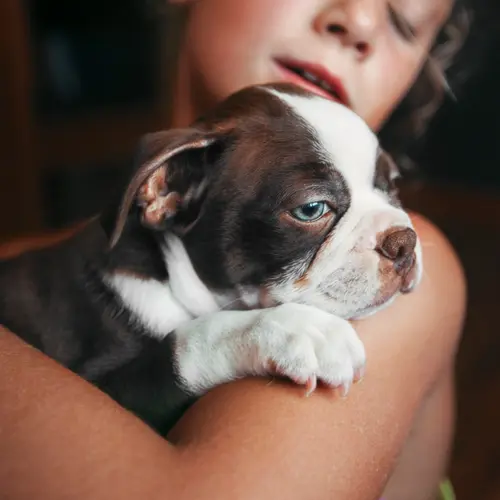What Is Velagliflozin?
Velagliflozin (brand name: Senvelgo) is a medicine that’s FDA-approved to improve control of blood sugar and clinical signs of diabetes in otherwise healthy cats that haven’t previously been treated with insulin. Blood sugar control is usually achieved within 1 week of starting the medicine in cats that aren’t dependent on insulin.
Velagliflozin isn’t for use in dogs.
Velagliflozin is called a sodium-glucose cotransporter 2, or SGLT2, inhibitor. It reduces the amount of sugar your cat’s kidneys absorb back into their body. The excess sugar is eliminated in your cat’s pee.
Velagliflozin is available as a prescription medicine from your veterinarian.
How Is Velagliflozin Used?
Velagliflozin is a liquid medicine given directly into your cat’s mouth or with a small amount of food. It’s usually given once daily (every 24 hours).
A missed dose should be given as soon as possible on the same day. If your cat vomits within 30 minutes after taking velagliflozin, a second dose should be given.
Always follow your veterinarian’s directions for giving medicines. Tell them about any medicines, vitamins, supplements, or herbal therapies you give your cat. Talk to your veterinarian before stopping any pet medicines.
What Are the Benefits of Velagliflozin?
There are many benefits of using velagliflozin in cats.
- It helps control your cat’s blood sugars in as soon as 1 week.
- There’s little risk of low blood sugar issues.
- It provides exact dosing based on your cat’s weight.
- It’s taken once a day.
- No refrigeration is needed before or after opening it.
- It has a long shelf life (6 months after opening).
- It’s given by mouth, so there’s no need for syringes and injections.
What Follow-up Is Required?
Your veterinarian will need to monitor your cat frequently after they start taking velagliflozin. Follow-up visits are needed on a schedule.
- 2 or 3 days after starting the medicine
- 1 week, 2 weeks, and 4 weeks after starting the medicine
- Every 3 to 4 months after the first month on the medicine
It’s important to keep an eye on your cat at home. Increased thirst, increased peeing, or changes in their appetite are key symptoms to watch for. If your cat suddenly starts vomiting more or its activity decreases, this could be a sign that something isn’t right. Contact your veterinarian if you have any concerns about how your cat is feeling while taking velagliflozin.
Does Velagliflozin Have Warnings or Side Effects?
Your cat’s vet will do a thorough physical exam and medical workup before prescribing velagliflozin. It’s not recommended to use velagliflozin in cats that have certain other conditions, such as pancreatitis (inflammation of their pancreas), infectious disease, urinary tract disease, or abnormal tissue growth called neoplasia.
In general, you shouldn’t use velagliflozin if your cat has these symptoms:
- Dehydration
- Repeated or long-term diarrhea
- Other long-term illness
- Suspected or confirmed diabetic ketoacidosis (DKA), which is a potentially life-threatening complication of diabetes that requires emergency vet care
- Previous treatment with insulin
Velagliflozin hasn’t been evaluated in pregnant, nursing (breastfeeding), or breeding cats.
The most common side effect of velagliflozin is diarrhea. It usually stops on its own after a short period of time. Other common side effects include weight loss and vomiting.
Less frequent side effects include increased peeing, increased thirst, decreased appetite, excessive drooling, and gagging.
The most serious side effects are development of euglycemic diabetic ketosis (eDK) and euglycemic ketoacidosis (eDKA). These are conditions where your cat’s blood turns acidic, even though their blood sugar is normal. eDK and eDKA are potentially life-threatening complications of diabetes and require immediate emergency care.
If you suspect your cat is having a serious side effect or may be overdosed, call your vet clinic immediately. If it’s outside regular office hours, you can contact a local emergency veterinary hospital or an animal poison control center. Extra fees may apply for emergency care.
You can reach the ASPCA Animal Poison Control Center at 888-426-4435 or the Pet Poison Helpline at 855-764-7661.
Does Velagliflozin Interact With Other Medicines?
Using multiple medicines can sometimes change how your cat’s medicines work or increase the risk for serious side effects. Tell your vet about any prescription or over-the-counter (OTC) medicines, vitamins/minerals, herbal products, and other supplements that your cat takes.
Before starting your cat on velagliflozin, tell your vet if it takes:
Insulin. Velagliflozin shouldn’t be used in cats that are being treated with insulin or have previously been treated with insulin.
Propylene glycol. Velagliflozin oral solution contains propylene glycol. Exceeding a total of 80 mg/kg/day of propylene glycol can harm your cat. Use velagliflozin with caution if your cat takes other products that contain propylene glycol.
This is not a complete list of medicines that can interact with velagliflozin. Always check with your veterinarian.
Are There Safety Concerns for Pet Owners?
Velagliflozin isn’t for use in humans. Keep it safely out of the reach of children. Wash your hands after giving velagliflozin to your cat.
How to Store Velagliflozin?
Velagliflozin should be stored at or below room temperature. It doesn't need to be refrigerated. A bottle of velagliflozin is good for 6 months after opening.

